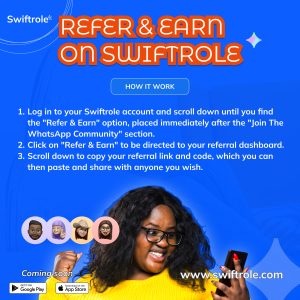Introduction: Speed Is Your Superpower
In the fast-moving startup world, ideas are everywhere, but execution wins. One of the smartest ways to avoid building the wrong product is to validate your startup idea early. And the fastest way to do that? Build a startup MVP: Minimum Viable Product.
Creating a successful startup MVP is essential for your business strategy.
A well-executed MVP lets you:
-
Test real user interest before spending heavily
-
Gather feedback to shape your product direction
-
Attract early adopters and potential investors
-
Reduce risks and avoid wasting months building what no one wants
And yes, it’s absolutely possible to build and launch an MVP in 30 days or less if you follow the right process.
Step 1: Define the Core Problem Clearly
Before you write a single line of code, get crystal clear on the problem you’re solving. Many startups fail because they build something “cool” but irrelevant.
Ask yourself:
-
What pain point am I solving?
-
Who exactly experiences this pain?
-
How often does this problem occur, and why?
-
What current solutions exist, and why are they not good enough?
Pro tip: Talk to real people. Surveys, interviews, or quick calls can reveal insights you won’t find in Google Docs.
Step 2: Identify the Key Feature Set (Not Everything)
Your MVP isn’t your final product; it’s your simplest functional version that delivers value. Pick one or two core features that solve the main problem.
For example:
-
Airbnb’s MVP was a simple website to rent air mattresses.
-
Dropbox’s MVP was a demo video.
-
Zappos’ MVP involved buying shoes locally and shipping them manually.
The goal isn’t perfection. It’s to learn fast.
Step 3: Map Out the User Journey
Sketch a simple flow showing how users will:
-
Discover your product
-
Use your core feature
-
Get the intended value
This helps you focus only on what’s essential and prevents feature creep.
Use tools like Figma, Miro, or whiteboards to visualise this journey quickly.
Step 4: Choose the Fastest Prototyping Method
Depending on your skills, resources, and product type, choose a fast build method:
| Method | Best For | Speed |
|---|---|---|
| No-code/low-code tools | Landing pages, SaaS, marketplaces | 🟢 Fast |
| Design prototypes (Figma/InVision) | Validating UX & flow without backend | 🟢 Very fast |
| Developer-built MVP | Complex or custom functionality | 🟡 Medium |
Examples of fast MVP tools:
-
Webflow / Framer – quick websites & landing pages
-
Bubble / Glide / Adalo – no-code apps
-
Typeform + Zapier – test demand with forms & automation
Tip: Use templates & pre-built components to save days of work.
Step 5: Launch a Simple Landing Page
Before even finishing the MVP, build a clean, persuasive landing page explaining:
-
What the product does
-
Who it’s for
-
Why it matters
-
A clear CTA (Join waitlist, sign up, pre-order, etc.)
Drive traffic to this page through:
-
Social media posts and communities
-
Targeted ads
-
Founder networks & newsletters
-
Beta tester groups
If people don’t care enough to click or sign up, that’s feedback. Adjust early.
Step 6: Test, Measure, Learn
Once the MVP is live, focus on learning rather than scaling.
Key validation metrics include:
-
Sign-ups / waitlist growth → demand interest
-
Activation rate → how many actually use it
-
Retention/return usage → is it valuable?
-
Qualitative feedback → why users love or hate it
Talk to your early users. Their insights are gold.
Step 7: Iterate Quickly
Your first version won’t be perfect—and that’s good.
Within the 30-day window, aim for rapid feedback loops:
-
Fix blockers or confusion points fast
-
Double down on features users love
-
Kill or rethink features that fall flat
Every iteration should move you closer to product-market fit.
Bonus: Create a 30-Day MVP Timeline
| Week | Goal |
|---|---|
| Week 1 | Problem validation, feature selection, and user journey |
| Week 2 | Prototype design & no-code setup |
| Week 3 | MVP build, landing page launch |
| Week 4 | MVP release, collect feedback, iterate |
This structure keeps your team focused and accountable.
Why This Approach Works
-
Speed kills doubt: You stop overthinking and start learning from reality.
-
Low cost: You validate before committing large budgets.
-
Investor-friendly: A working MVP attracts interest more than a pitch deck.
-
User-driven: Your roadmap is shaped by actual customer needs.
Conclusion: Build Fast, Learn Faster
Validating your startup idea doesn’t need a 6-month dev cycle or a huge budget. With the right mindset, tools, and structure, you can launch an MVP in 30 days and make smarter decisions about your startup’s future.
Remember:
“An MVP is not a smaller product. It’s a smarter way to build.”
Start lean. Move fast. Learn everything.




